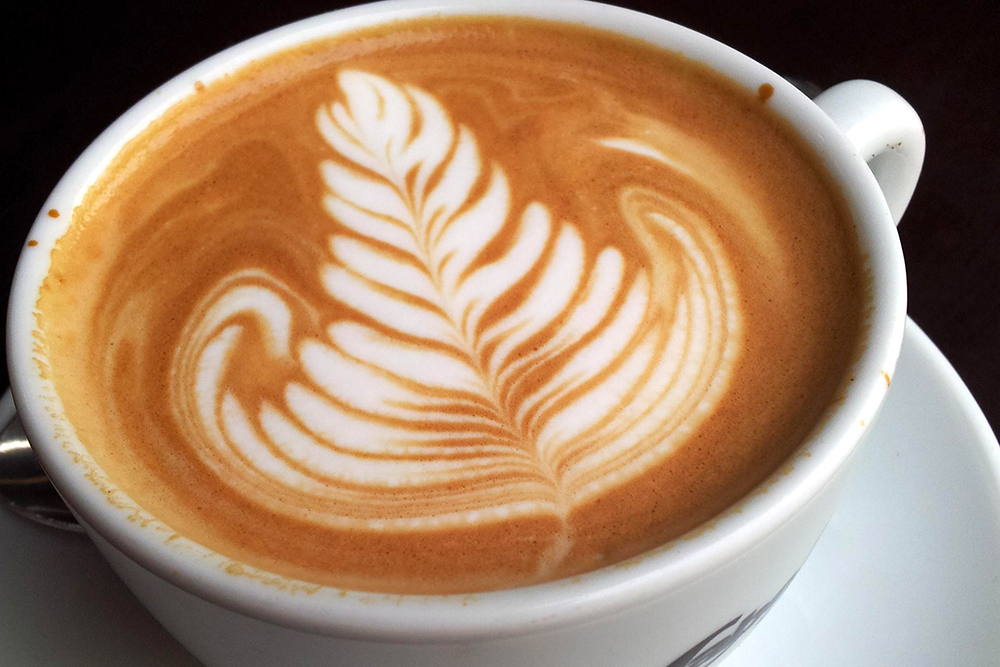RECOIL OFFGRID Preparation Backwoods Brewing: How Do You Make Your Coffee?
In This Article
There's something revitalizing about a strong, steaming-hot cup of coffee. It warms you up, provides an instant energy boost, helps you stay alert, and improves morale… unless you're one of those heathens who prefers tea (just kidding, we like tea too). However, a good cup of coffee isn't easy to conjure out of thin air — if it were, you wouldn't see Starbucks and Dunkin' Donuts on just about every corner. Brewing a great cup of coffee is practically an art form, especially when you're in the backcountry with limited gear.

While you may not be able to make a fancy cappuccino in the woods, a good cup of black coffee is doable.
If you're at home, making coffee is usually as easy as pouring some grounds and water into a drip machine and pressing a button. But that's not happening if you're carrying all your gear in a backpack. So, what's the best way to make coffee in the great outdoors? There are many techniques to consider, so we'll discuss a few and go over the pros and cons of each.
If you're heading out on a short trip but don't want to bother with additional gear or grounds, instant coffee is a viable option. These freeze-dried coffee crystals often come in single-serving pouches, have a long shelf life, and can be simply stirred into hot water. However, if you're a purist, you'll immediately know it's not the real deal.

Pros:
Cons:
This is about as simple as real coffee gets, but can be a little off-putting if you're not a die-hard mountain man.
All you do is heat some water, toss in some grounds, and wait a few minutes for the flavor to disperse. If you're really hardcore, you can drink straight from the pot and strain out the grounds with your teeth. Otherwise, we'd recommend pouring off the top layer into a mug, and disposing of the wet grounds at the bottom of your pot.
Pros:
Cons:
This method is one you can try at home. Just take a small scoop of coffee grounds, and pour it into a filter like you normally would. Then take some string or a strand from gutted 550 cord and tie off the opening of the filter, forming a coffee bag that you can steep in hot water like a tea bag. The amount of coffee and steeping time can be adjusted for water quantity and brew strength. Check out this tutorial from Thrillist for a step-by-step guide.
You may also be able to find single-use coffee bags at the grocery store. For example, Folgers Coffee Singles and Maxwell House Single-Serve bags.
Pros:
Cons:
Another lightweight option is a drop-in filter. This setup submerges a filter and grounds in your cup, and lets you steep the mixture before removing the filter.
Some drop-in filters are rigid plastic, such as the MSR MugMate, and can be used for either coffee or loose tea. You can also go with a simple washable cloth filter, which costs only a few dollars and weighs next to nothing. Either way, once cleaned, these filters can be re-used.
Pros:
Cons:
Now we're starting to get into the more complex systems, but this added complexity can bring added flavor. You also get to feel like a coffee hipster, since this technique has gained popularity in the home market thanks to systems like the Chemex.
Pour-over coffee involves a device which sits above your cup or pot, holds a filter, and channels water down through a small drip opening. By controlling the flow rate of the water into your cup, you'll get a much smoother and more consistent brew. For best results, pour-over requires a kettle or pot with a spout, so a steady stream of water can be poured onto the grounds — sloshing hot water onto your grounds isn't ideal.
Pros:
Cons:
The most traditional press is a French press, which is a pitcher-style device with a central plunger. Brewing with a French press starts out like cowboy coffee, with grounds and hot water blended inside the pitcher, but the plunger forces the grounds to the bottom and strains your coffee for a much cleaner finish. Check out the infographic below from RoastyCoffee.com to understand the steps.
There's also the AeroPress, which which uses manual pressure to extract more flavor from your coffee grounds, and can be used to produce espresso-style coffee or ordinary coffee. Here's a video that demonstrates the AeroPress for those who haven't seen one in action:
While the debate between French press and AeroPress rages on among die-hard coffee enthusiasts, both share many of the same strengths and weaknesses.
Pros:
Cons:
A percolator is a specialized pitcher which continually directs water up a central tube and spreads it across a layer of grounds, allowing it to drip back down to the bottom. Up until the development of the electronic drip coffee maker, most homes used these devices to make coffee.
Small and relatively-lightweight percolators are available, such as the Bialetti Moka Express, a design which has remained virtually unchanged for 80 years. Backpacking gear companies have also produced outdoor-oriented percolators, such as the GSI Outdoors Glacier Perc.
Pros:
Cons:
So, what's your preferred method of brewing coffee in the backwoods? Let us know in the poll below.
 STAY SAFE: Download a Free copy of the OFFGRID Outbreak Issue
STAY SAFE: Download a Free copy of the OFFGRID Outbreak Issue
No Comments